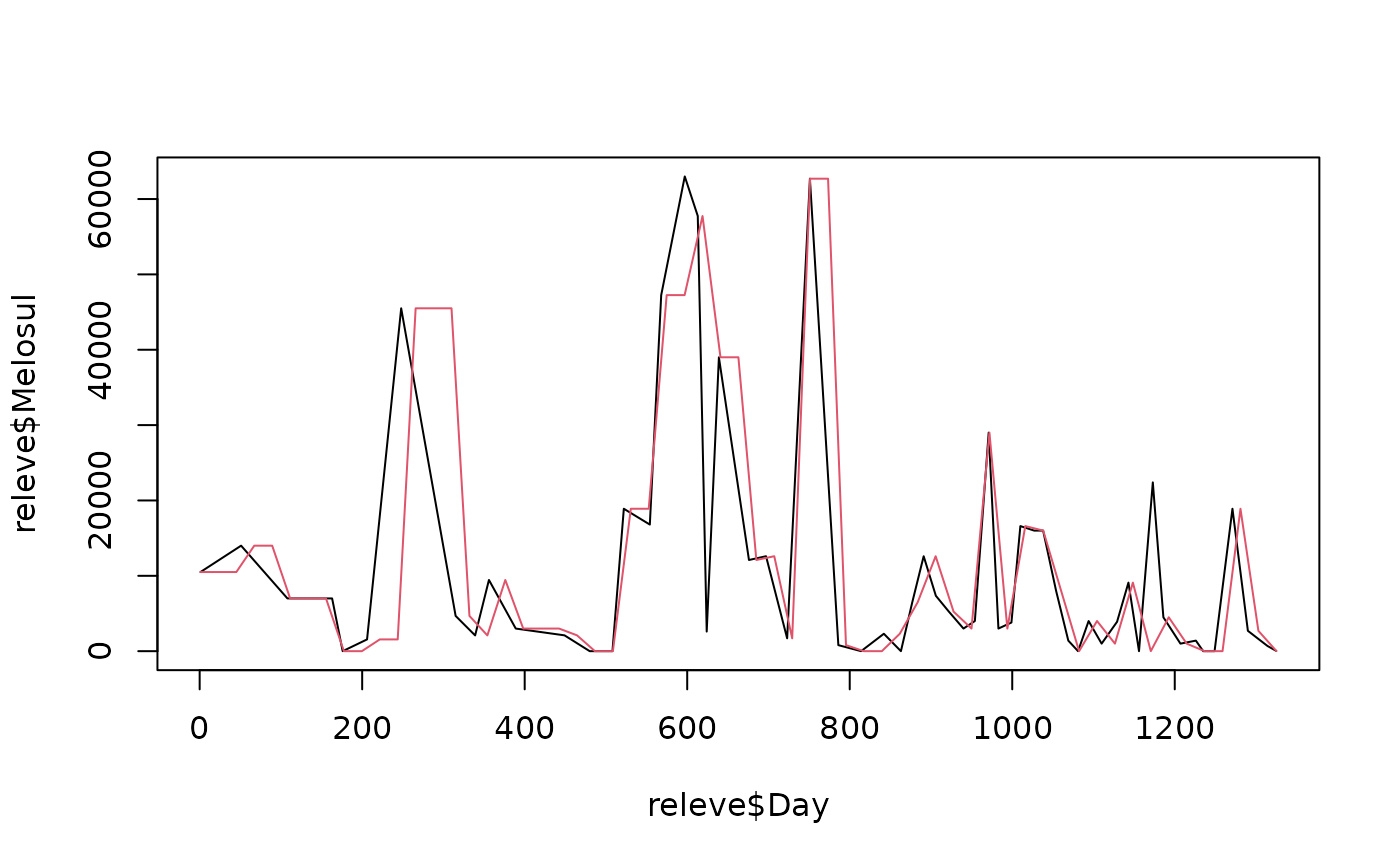
Regulate a series using the constant value method
regconst.RdTransform an irregular time series in a regular time series, or fill gaps in regular time series using the constant value method
Arguments
- x
a vector with time in the irregular series. Missing values are allowed
- y
a vector of same length as
xand holding observations at corresponding times- xmin
allows to respecify the origin of time in the calculated regular time series. By default, the origin is not redefined and it is equivalent to the smallest value in
x- n
the number of observations in the regular time series. By default, it is the same number than in the original irregular time series (i.e.,
length(x)- deltat
the time interval between two observations in the regulated time series
- rule
the rule to use for extrapolated values (outside of the range in the initial irregular time series) in the regular time series. With
rule=1(by default), these entries are not calculated and getNA; withrule=2, these entries are extrapolated- f
coefficient giving more weight to the left value (
f=0, by default), to the right value (f=) or to a combination of these two observations (0 < f <1)
Details
This is the simplest, but the less powerful regulation method. Interpolated values are calculated according to existing observations at left and at right as: x[reg] = x[right]*f + x[left]*(f-1), with 0 < f < 1.
Value
An object of type 'regul' is returned. It has methods print(), summary(), plot(), lines(), identify(), hist(), extract() and specs().
Note
This function uses approx() for internal calculations

